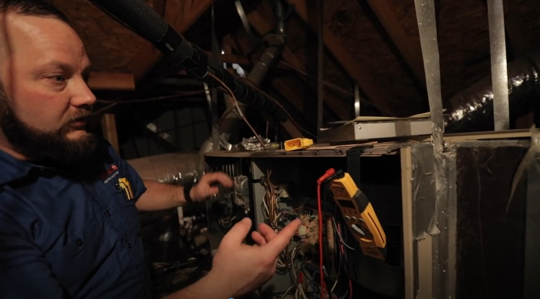Just like any major equipment, your home’s gas furnace can become hazardous if not handled and maintained properly. That’s why we’ve put together some essential tips about furnace safety for homeowners, along with warning signs that mean your heating system needs some professional TLC.
BASIC TIPS FOR FURNACE SAFETY
Use these tips to ensure your furnace is safe to operate year after year.
1. Get the equipment serviced and inspected yearly.
The best way to keep your heating system in tip-top condition is to get it maintained by a professional once a year. The ideal time for this service is right before winter (or right before you intend to start using the furnace). While cleaning, lubricating, and tightening up the equipment, the technician will also inspect the furnace’s critical areas for safety issues like incomplete combustion or carbon monoxide leaks.
2. Install carbon monoxide detectors in your home.
Any device that burns fuel produces carbon monoxide. Therefore, your gas-burning furnace also creates this toxic gas. When your heating system functions correctly, carbon monoxide and other fumes are vented outside your home, where they can’t hurt you. In the event of a leak, carbon monoxide detectors will alert you so that you can leave your home before being poisoned. Remember, carbon monoxide is impossible to detect by sight, smell, or taste.
3. Never store items on or next to the furnace.
Your furnace might be located in an area that you use for storage. Even so, don’t be tempted to lean items against it or use it as an extra shelf. Crowding your furnace can decrease its efficiency. Even more importantly, fabric, cardboard, paper, and similar items can catch fire if the equipment gets hot enough.
4. Keep flammable materials away from your furnace.
Keep in mind that your furnace contains fire and a lot of heat, so you should avoid keeping anything flammable near the equipment. That includes cleaning solutions, paint, paint thinners, gasoline, oil, acetone, and similar volatile substances. If these liquids reach their flashpoint, they will ignite.
FURNACE WARNING SIGNS
Now that you know some essential furnace safety tips, it’s critical that you also learn some “red flags.” If you notice any of the warning signs below, don’t wait to get your heating equipment inspected by a professional HVAC technician.
1. The furnace flame has streaks of yellow, orange, or green.
When everything is working correctly, your furnace’s flame should burn blue. It’s also acceptable for there to be some yellow at the tips. However, if you see yellow, orange, or green streaks in the flame, this signals a problem.
An off-color flame means that your ratio of natural gas to oxygen is off. Even though you own a “gas furnace,” it actually uses a mixture of natural gas and oxygen in the combustion process. When there’s not enough oxygen or when there’s too much gas, the gas mixture doesn’t burn cleanly.
Why is this bad? For one, your furnace won’t be as hot (or efficient), so it will cost you more money to use. Your furnace will also produce more soot and carbon monoxide. Often, dirty burners are the issue, but there could also be a problem with the gas supply. Any time an issue involves gas, make sure to hire a professional.
2. The furnace makes a boom, bang, or pop when it starts up.
It’s perfectly normal to hear your furnace turn on and start running. What you never want to hear is a bang, boom, or pop when the equipment first turns on. This noise means that your furnace has a delayed ignition problem.
What is delayed ignition? Something is preventing the gas in your furnace from igniting right away. This lets the gas build-up. When it finally comes in contact with a flame, it ignites and explodes, creating that “boom” inside the equipment.
Repeated explosions can put a lot of stress on your heating equipment and result in you needing to replace a major component. What’s more, if you own an older furnace, excess gas can cause a dangerous flash fire if you try to relight the pilot light.
3. A persistent burning smell.
If you smell something burning when you first turn your furnace on for the fall or winter, don’t worry just yet. You’re probably smelling the dust burning off the equipment, which is typical and not a cause for alarm. However, if the burning smell doesn’t go away, there’s something wrong.
Your system may be overheating from lack of airflow, so first, try replacing the air filter. If that doesn’t work, shut your system off and call a professional.
If you need reliable, top-quality heater repair in Dallas, TX, please call Rescue Air and Plumbing at (972) 201-3253 or use our online form.

